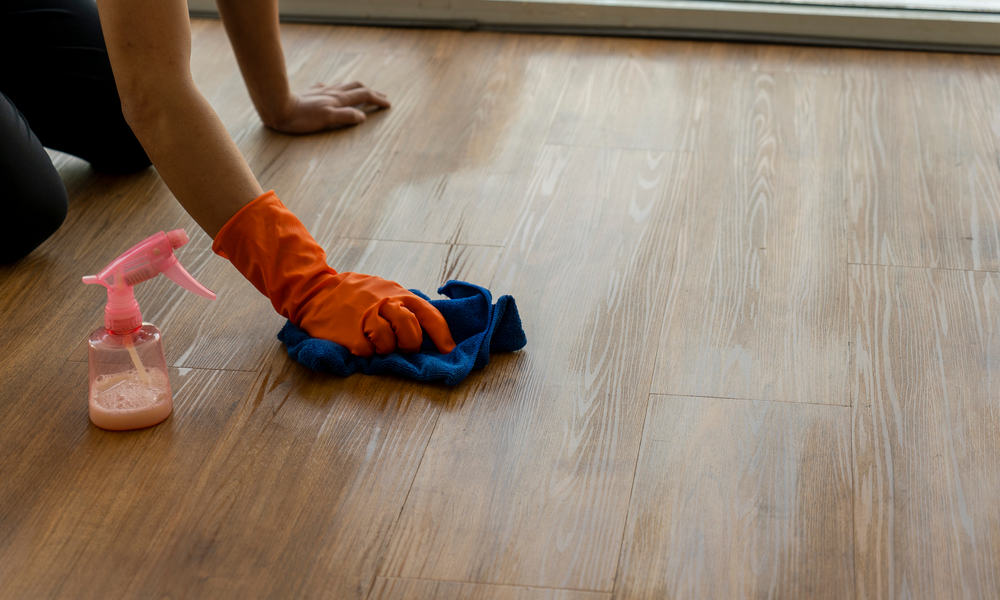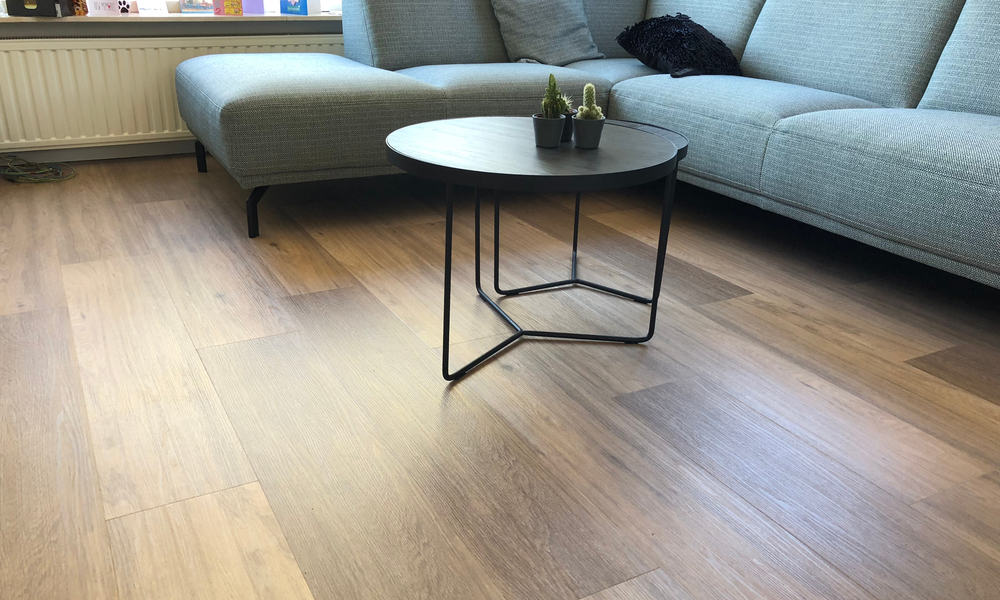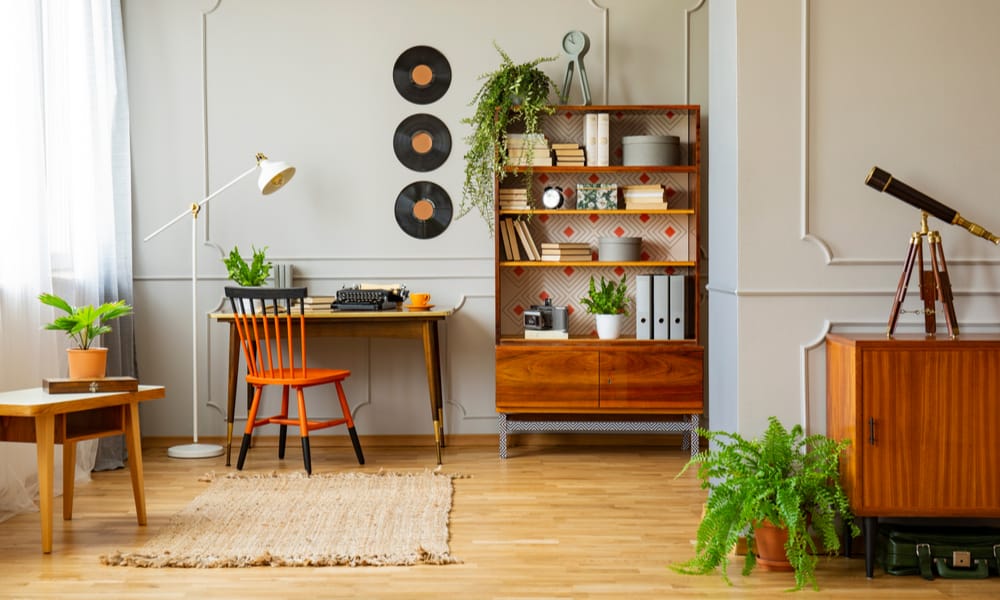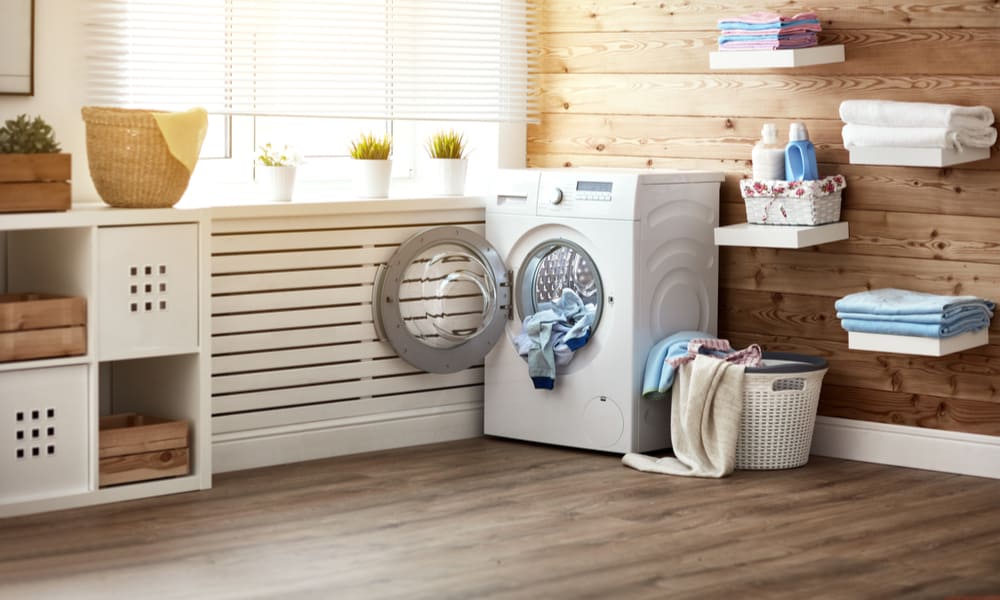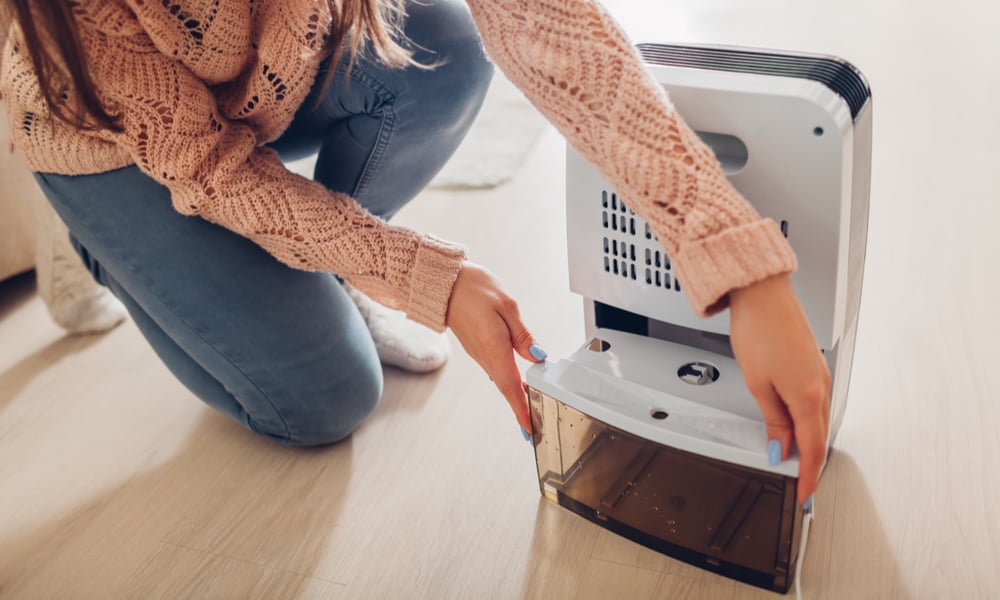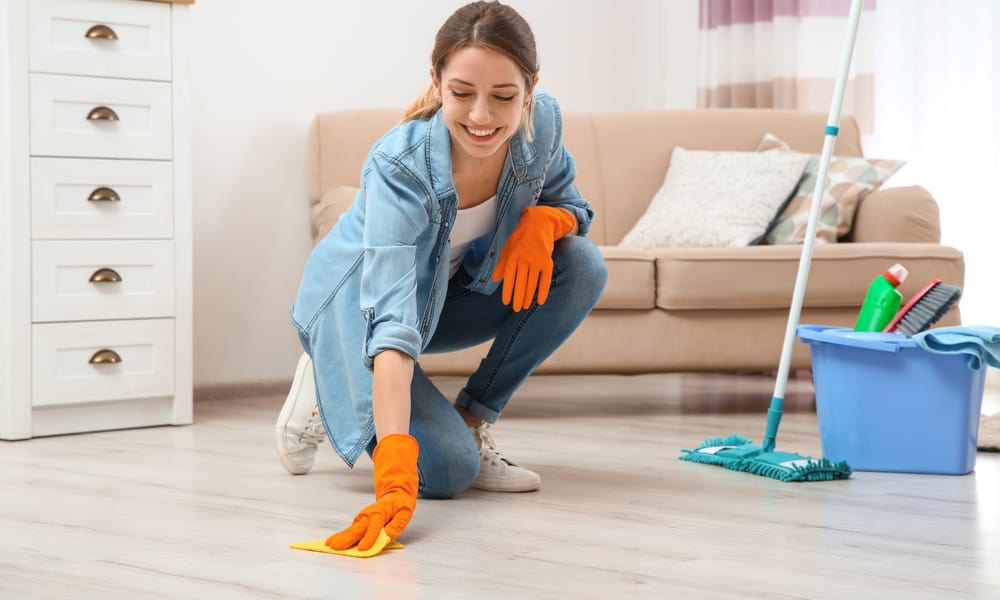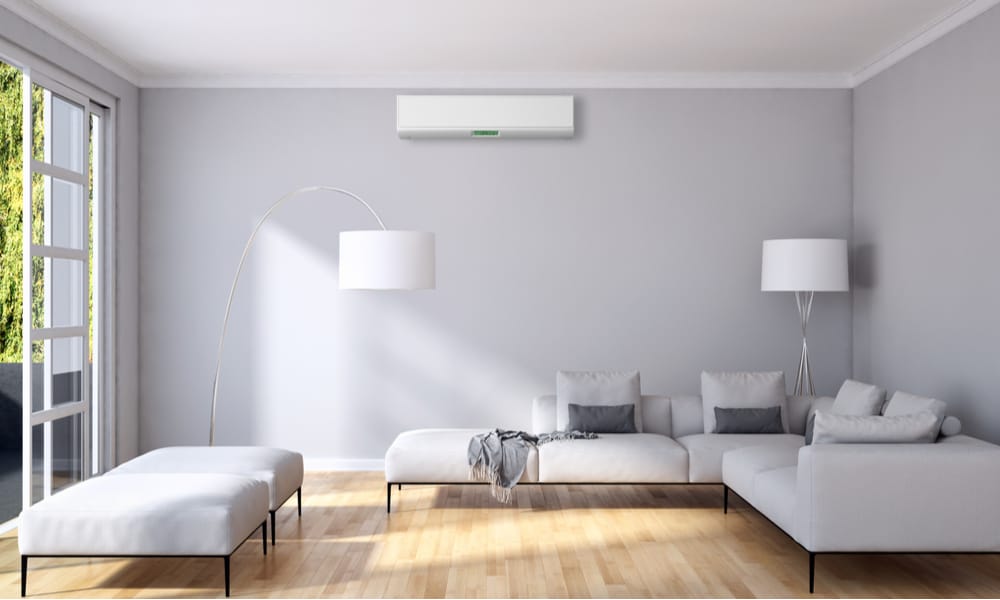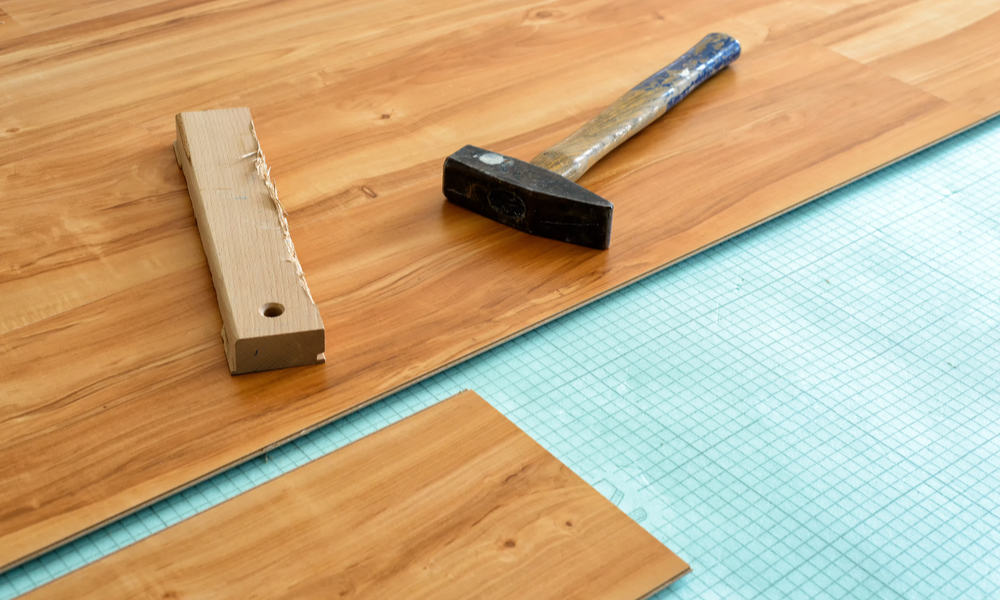Although vinyl flooring is known to be waterproof, liquids can still seep through the grooves, edges, or unsealed seams and get trapped underneath the flooring, causing mold to grow.
Now, mold not only causes the flooring to deteriorate, but also puts you at risk of respiratory illnesses like sore throats, asthma, allergies, and in severe cases, serious lung infections.
In this post, we share several tips to prevent mold on vinyl flooring to help you maintain a mold-free home. We also tell you how to know if you have mold on your vinyl. Read on!
Ways to Prevent Mold on Your Vinyl Flooring
1. Keep the Floor Dry
Since mold mostly develops where there is moisture, to prevent it from growing underneath your vinyl flooring, make sure you are keeping your floor dry.
Wipe off any spills or lingering moisture before they have a chance to seep through the seams or grooves of your planks.
If you have any leaking pipes or unsealed doors and windows, have them checked by a professional right away. Ideally, you should close any opening that is likely to allow water or water vapor to enter your home and underneath your flooring. If you can manage to keep your floor dry, then it could be much easier for you to keep mold at bay.
2. Declutter Your Space
Too many items on the floor can cause congestion, making it difficult for air to freely circulate throughout the room.
Avoid storing too many objects on the floor, and if you really have to, make sure there is proper ventilation and the items are not in direct contact with the vinyl.
3. Minimize the Number of Plants in Your Indoor Space
While plants give our living spaces fresh air and keep them looking beautiful, they are also one of the things that mold feeds on, so ideally, plants should be put outside.
But if you insist on having some inside a room with vinyl flooring, make sure you are keeping only a few. It is also important to have stands or trays under the plants to prevent drips.
Avoid overwatering too, and check the soil and leaves regularly for mold. If you find mold, change the soil immediately or move the plant outdoors.
4. Vent Your Laundry Rooms and Machines
If you frequently use appliances such as a washer or a dryer, make sure to vent it after use. Otherwise, the water vapor it produces will have nowhere to go and will be trapped on the walls and ceiling.
Once it cools, it will turn into liquid and start dripping onto your vinyl flooring. If the drips are not noticed soon enough, they can seep through the seams and expansion joints, and get trapped between the vinyl and the subfloor, becoming a breeding ground for mold.
If you are not able to vent your laundry machines, keep your laundry room windows open or use a fan. While at it, completely wipe the flooring off any spills that could have occurred during the washing or drying process.
5. Use a Dehumidifier
A humid room can accelerate the growth of mold on your vinyl flooring. Luckily, you can use a dehumidifier to prevent this.
While a fan can be an effective way to get rid of excess humidity, a dehumidifier, is able to reach even those places a fan cannot reach such as underneath your vinyl flooring.
If you want to control moisture levels in your home and prevent molding, consider investing in a high-quality dehumidifier. It will be especially effective if you have mopped your floor and you want it to dry quickly. Leaving your doors and windows open as needed can also help bring down humidity levels and dry the room quickly.
6. Keep Your Floor Clean
Dirt on vinyl flooring creates mold because, for starters, the dirt itself contains both mold spores and moisture.
If a piece of dirt is trapped between the grooves or seams of your vinyl flooring, after a few days, the moisture in it combined with the room’s humidity will provide a rich breeding environment for the mold.
And given that dirt is hygroscopic, meaning it can absorb moisture from the atmosphere, the more it continues to lay on the floor, the more conducive the environment will get for the mold spores to multiply.
If this dirt is not cleaned soon enough, the mold will grow and some of it will sneak underneath the flooring where it will spread like wildfire.
7. Keep Temperatures Low
A temperature of 80° F and above can contribute to the growth of mold on vinyl flooring. The good news? Your central air conditioning cools the air as it lowers humidity, so it can help regulate both temperature and moisture in your home.
To prevent mold, keep your indoor temperature below 80° F and humidity between 40% and 60%.
8. Install a Moisture Barrier
If you live in an area prone to dampness, it would be a great idea to install a moisture barrier before laying your vinyl flooring over a concrete subfloor.
A moisture barrier is simply a sheet of plastic that goes between the vinyl flooring and the subfloor to prevent any moisture that penetrates the subfloor from reaching the vinyl. You can buy it separately or get an underlayment with one built-in.
By keeping water from the vinyl, you will be preventing the development of mold, which will enable your flooring to last longer.
A moisture barrier will also:
- Help with pest control: If your subfloor is not sealed, unwanted rodents may crawl through it, chew through the vinyl planks, and enter your home. A moisture barrier especially one installed with an underlayment helps close any crawling holes, eliminating the unwanted gnawers.
- Regulate temperature: Any moisture that enters your home can lower your indoor temperature, affecting the performance of your HVAC system. As such, the system will be forced to work extra hard to bring the temperature to the desired settings.
This will not only raise your energy bills but also cause the HVAC to break down prematurely. Installing a moisture barrier can help prevent this problem.
Watch this video to know what a moisture barrier is and when you should use it.
How to Know There Is Mold on Your Vinyl Flooring
If you take the above precautions, you will likely be able to prevent mold on your vinyl flooring. But sometimes no matter how much effort we put into keeping this nasty stuff out of our homes, it may still find its way in. So, how do you tell if your vinyl flooring has mold?
Watch Out for an Earthy Smell
The most common way to know if you have mold underneath your flooring is by using your sense of smell.
The smell of mold will be very unpleasant, mostly similar to that of wet socks, rotten wood, or anything whose scent is musty or earthy-like.
If the mold has not spread much, the smell may not be very strong but if you are keen, you can still notice it. And given that mold usually forms where there is moisture, the best places to check will be the bathroom, near flower pots, underneath sinks, and around the bathtub. Simply kneel and take a quick sniff.
Look for Visible Signs
Mold will usually be gray or black in color. If there is some on your vinyl floor, you will notice dark or gray spots around a specific spot. Clean the spot with mild soap and water and let it dry.
If the spots come back after a few days, there is a chance that the backing of the flooring and the subfloor have been compromised, so consider pulling out the affected planks to assess the extent of the problem.
Listen to Your Body
As we mentioned earlier, mold can put you at risk of respiratory diseases. If you have a cough that won’t go away, you are constantly tired for no apparent reason, your body is itchy, or a respiratory problem you have is getting worse, it would be wise to have your house checked for mold.
Check for Leaking Pipes
If your water bill mysteriously goes up, you could be having a leak in your plumbing. And if the leak has been around for some time without being noticed, there is a chance it might be feeding some mold somewhere. Check every pipeline for leaks especially those that are likely to let water underneath your flooring and have them fixed immediately.
The Takeaway
Nobody wants to see mold on their vinyl flooring. Not only is the smell of mold unpleasant but failure to address it can subject you and your loved ones to serious respiratory diseases.
Luckily, by using the tips shared here, you can prevent mold from growing on your vinyl flooring. The important thing is to keep moisture as far away from your vinyl as possible. Ensuring your floor is clean and decluttered at all times can also go a long way in creating healthy, mold-free living spaces.
